"we are extremely excited to offer our research studies, reports and software on the bloomberg professional system. we believe our trading discipline through the technical observation of our advanced bias, setup and trigger measures dovetails nicely with the advantage of knowing who is getting squeezed ." Phil Erlanger, CMT & president of Phil Erlanger Research Co., Inc.
displaced moving average (DMA) channel: simple yet versatile
The DMA channel is powerful as a multi-purpose indicator. It can be used as a trend direction tool, a trigger for long and short trades, or as a bias indicator. It can even be used as a setup indicator.
the DMA channel: bias strategy
A positive bias reflects times when only long trades are considered. If price moves above the DMA Channel, then the bias is positive. However, using the DMA Channel as a bias should be confined to intervals larger than one uses for triggers. For instance, if you are trading an index, use triggers based on daily data, but use weekly or monthly data to determine the bias:
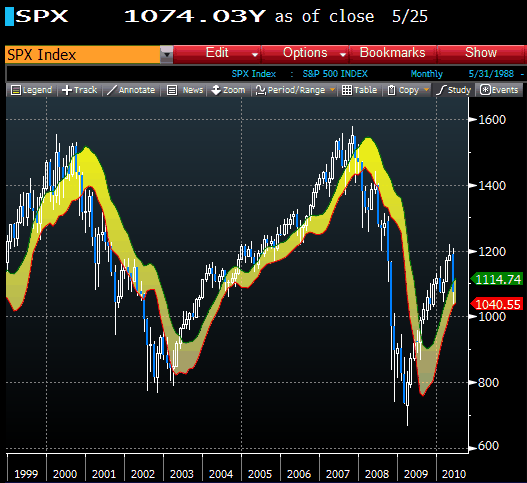
Look at the SPX with the DMA channel on a monthly basis. The benefit of establishing bias in this way can be seen if traders only took long trades when the S&P 500 index was above its monthly DMA channel and short trades when the S&P 500 index was below its monthly DMA channel. Do the same for your favorite stock.
At the time of this writing, the S&P 500 Index had struggled since 2000, losing -16.57%. But as the table below demonstrates, navigating the S&P 500 using its monthly DMA channel as described above yields a much different story:
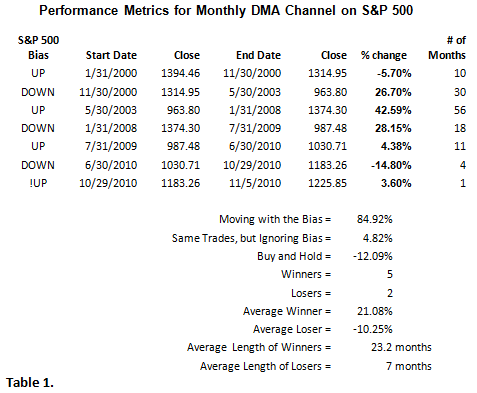
The action of the stock market during this period (since the start of 2000) has had many swings, both up and down. Many portfolio managers and traders suffered during the declines of 2000-to-2003 and 2008-to-March 2009. Billions of dollars were lost. Imagine how much of that money would have been saved if those portfolio managers traded with the discipline of this “big picture” bias.
The S&P 500 is only one index. Looking at all the major indices and their “big picture” bias signals is a prudent way to confirm any one index signal:
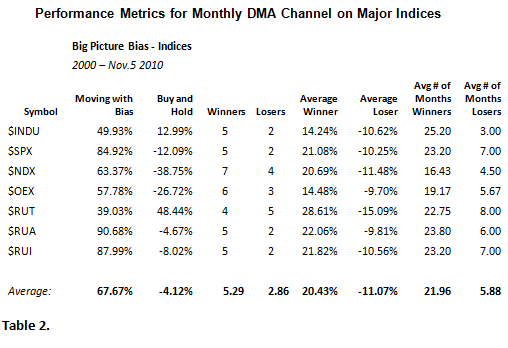
If the majority of indices sport a “big picture” bias in the same direction, that bias is confirmed.
the DMA channel: trigger strategy
A timely trigger is to buy when price moves above the DMA channel and to short when price moves below the DMA channel:
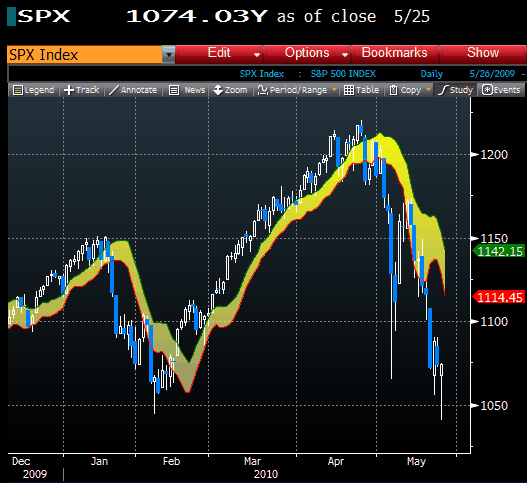
It is important to use the interval appropriate for the type of trading you do for triggers and, as mentioned above, for bias determination. If you trade on daily data, use daily DMA channels for triggers and weekly or monthly data for bias determination.
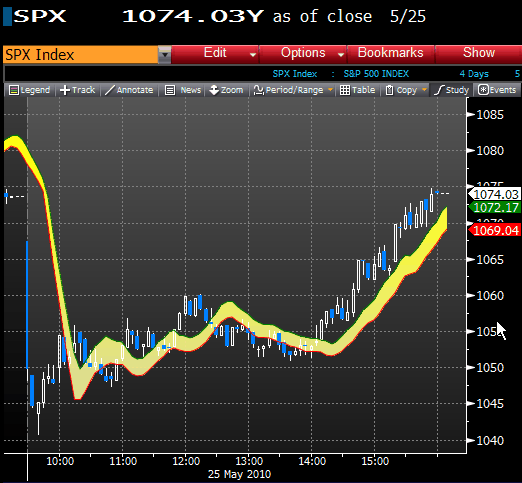
If you trade on 5 minute bars, use 5 minute (or smaller) DMA channels as triggers and 29 minute or 60 minute DMA channels for bias determination.
the DMA channel: SETUP strategy
The DMA channel can also serve as a setup measure. For example, if there is an upturn in price, we look for price to stay above the DMA channel. We are also concerned with the slope of the channel. The steeper the slope of the DMA channel, the more powerful the advance phase. This brings us to the heart of the matter. Stocks generally transit from advance phase to decline phase and back to advance phase - so on and so forth. How the current phase unfolds can set up the tone of the next phase if an advance phase is mediocre, the next decline phase is more likely to be nasty. If a decline phase in mild, this could setup a relatively stronger move in the next advance phase. The DMA channels slope helps in monitoring the tone of the current advance phase.
Warranties,
Disclaimers & Legal Rights || Risk
Disclosure || Earnings
Disclaimer
Terms of
Service || Privacy
Policy
